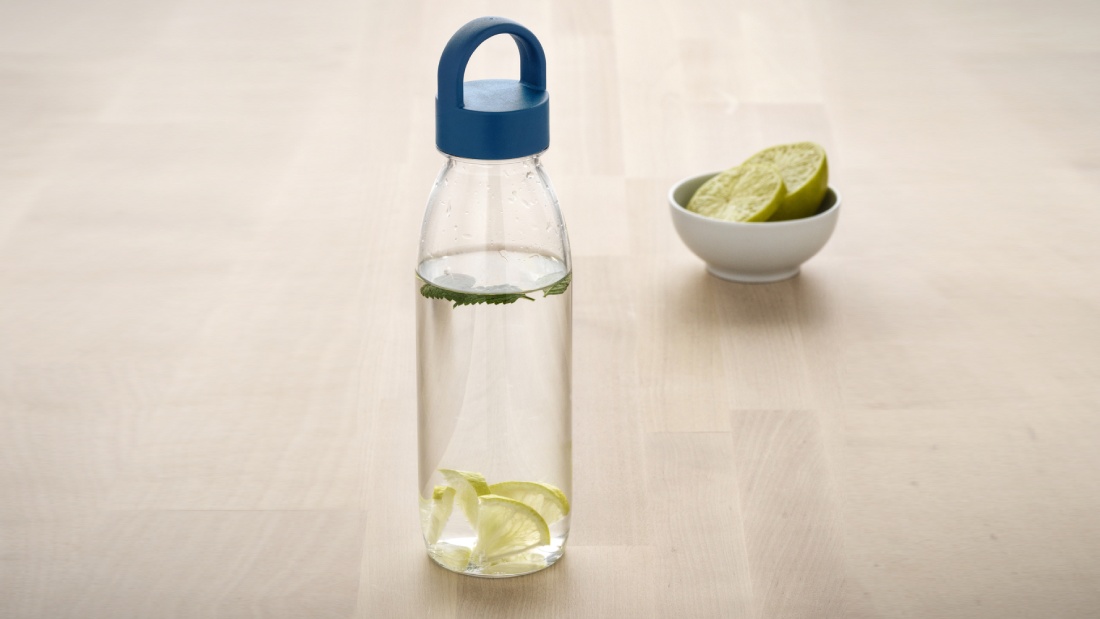Using plastic packaging provides convenience and practicality in daily activities. Plastic serves not only as storage for various household items but also as packaging for carrying food and beverages on the go. Many food and beverage products on the market use plastic for packaging. However, not all types of plastic are safe for storing food or drinks.
Several types of plastic has different purposes based on the RIC (Resin Identification Code) numeric code. RIC is a classification of plastic types that helps classify them for proper use and recycling, ensuring safety and efficiency in the recycling process. RIC is commonly found at the bottom of plastic packaging, represented by a triangular symbol with a numeric code inside. Let's delve deeper into the RIC classification.
Numeric code 1
Numeric code 1 represents plastic packaging with Polyethylene Terephthalate, abbreviated as PETE/PET. PET plastic is known for its smooth and transparent surface, often used by bottled water manufacturers and various flavoured beverage products. PET plastic is safe to use as it does not contain the chemical Bisphenol A (BPA).
However, PET plastic is recommended for single-use only. This is because the polymer layer and carcinogenic compounds in PET plastic can leach into food or beverages, especially when exposed to warm or hot temperatures. To contribute to environmental friendliness, PET plastic can be recycled and used as raw material for various items, such as jackets, pillows, or blankets.
Numeric code 2
Plastic packaging with the numeric code 2 is High Density Polyethylene, abbreviated as HDPE/PEDH. This type of plastic is also BPA-free and is known for preventing chemical reactions between the packaging and its contents, making it safe for use. HDPE plastic has a harder, denser surface and is resistant to high temperatures, making it suitable for packaging for milk products, juices, ice cream, etc.
Similar to PET plastic, HDPE is recommended for single-use only. This is because HDPE contains antimony trioxide, and the release of this compound can increase over time, posing potential health risks.
Numeric code 3
Polyvinyl Chloride, abbreviated as PVC/V and with the numeric code 3, is a plastic type unsuitable for food or beverage packaging due to its chlorine content and other harmful chemicals that easily dissolve. PVC can pose health risks when used as a packaging for food or drinks.
Besides being hazardous, plastic with numeric code 3 in the RIC classification is also difficult to recycle. Therefore, PVC is commonly used in the production of construction materials such as water pipes, plastic fences, cable insulator layers, etc.
Numeric code 4
Plastic with the numeric code 4 is commonly encountered in daily activities. Low Density Polyethylene, abbreviated as LDPE/PELD, is the plastic used for plastic bags or polyethylene bags. Due to its flexibility, strength, resistance to solvents, and BPA-free content, LDPE is also widely used as packaging for bread, frozen food, and various kitchen spice products.
As LDPE is extensively used for various products and practical for carrying items and food, its circulation is substantial. This can contribute to environmental issues due to the accumulation of LDPE plastic waste, especially since it tends to be used for single-use purposes. Fortunately, LDPE plastic is easily recyclable by dissolving and re-molding it into useful items.
Numeric code 5
Plastic with the numeric code 5 is Polypropylene, abbreviated as PP, commonly found in ice cream packaging, fruit salad packaging, margarine packaging, and some microwave-heated food products. PP packaging has a hard and sturdy surface, is resistant to high temperatures, and is not easily soluble in solvents. This makes it safe for use.
PP packaging can be used repeatedly, with attention to its condition over time. Prolonged use can lead to damage, rendering PP plastic unsafe for use. Recycling options for PP plastic include shredding or melting it, then molding it into useful items.
Numeric code 6
Plastic with the name Polystyrene, abbreviated as PS, and the numeric code 6 in the RIC classification is often found as styrofoam food packaging. With a white, brittle surface that releases toxins from its styrene component when exposed to high temperatures, PS plastic is not guaranteed to be safe for food packaging.
It's essential to consider other types of packaging that are not easily soluble in solvents and resistant to high temperatures.
Numeric code 7
Numeric Code 7 represents various plastic packaging other than those with codes 1-6. This includes plastics using Styrene Acrylonitrile (SAN), Acrylonitrile Butadiene Styrene (ABS), Polycarbonate (PC), and nylon.
Among these, according to the Ministry of Health of the Republic of Indonesia, only SAN and ABS can be considered safe for food and beverage packaging as they do not contain the chemical BPA. However, PC and nylon contain BPA, posing health risks making them unsafe for use.
Plastic with the numeric code 7 is hard to recycle. Therefore, plastics with the numeric code 7 are often used to produce durable food packaging and high-strength beverage bottles for long-term use.
Based on the plastic types with codes 1-7, it is evident that plastic or packaging with codes 1, 2, 4, 5, and 7 with SAN and ABS are safe for food packaging and beverage bottles. However, not all plastics with these five codes can be used repeatedly. To ensure safety, make sure that plastic packaging used for food or beverages is labelled as "Food Grade" or "Food Safe".
However, using plastic packaging massively, especially single-use plastic has a negative impact on the environment. Therefore, IKEA is actively reducing the use of single-use plastic packaging and aims by 2030 to only use recycled plastic or PLA (polylactic acid) made from renewable sources such as corn, sugar beets, and sugarcane as raw materials for IKEA products.
